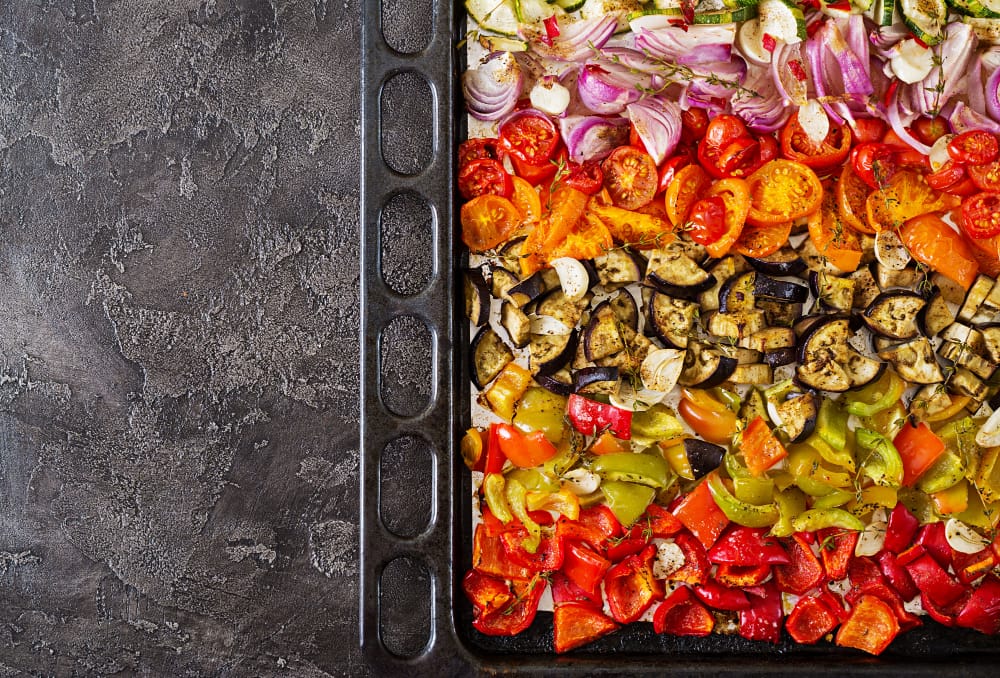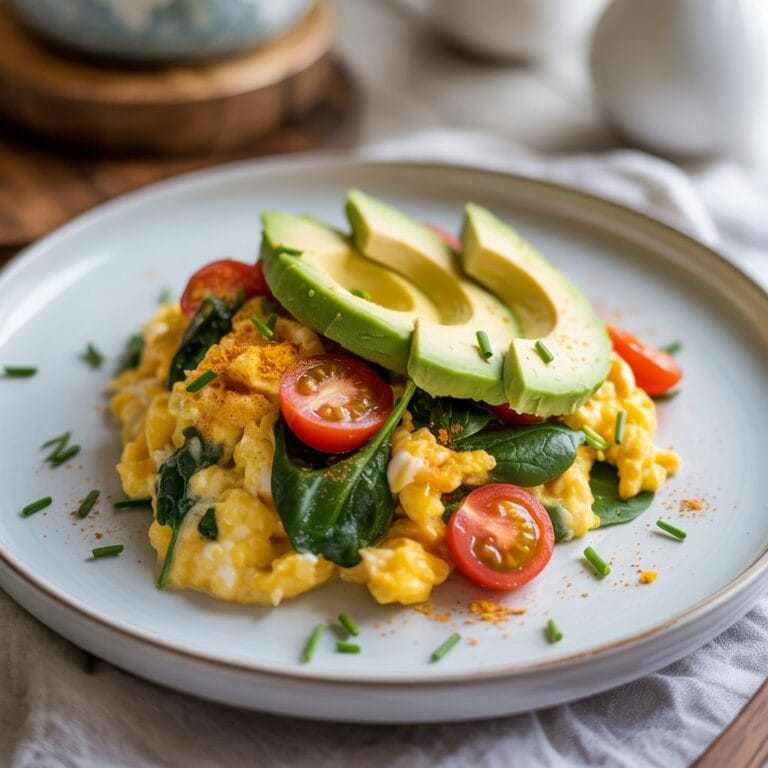FREE SHIPPING OVER $50
Chef’s Secret: Stop Ruining Your Roasted Veggies! The RIGHT Moment to Add Oil for Perfect Crispy Edges
Tired of limp, soggy roasted veggies? You meticulously chop, season, and bake, but those coveted golden-brown, perfectly crispy edges remain a mystery. It’s a common culinary headache, leaving you with delicious flavors, but without that satisfying crunch we all crave from our roasted vegetables. You might have tried everything – higher heat, spreading them out – but a crucial detail is likely sabotaging your efforts.
What if a single chef’s secret, a precise timing tweak for adding oil, could instantly transform your veggies from drab to dazzling? This isn’t just another kitchen tip; it’s a fundamental principle of cooking chemistry that promises to deliver perfect crispy edges every single time. Get ready to discover the exact moment to add oil that will revolutionize your healthy cooking and have everyone begging for your secret!
The Roasting Riddle: Why Do Veggies Get Soggy?

Before we reveal the chef’s secret, let’s quickly understand why our roasted vegetables sometimes fall short of that glorious, crispy ideal. It mostly comes down to moisture and how heat interacts with it:
- Internal Moisture: Vegetables are mostly water. When you put them in the oven, that water needs to evaporate for the surface to dry out and crisp up. If it evaporates too slowly or gets trapped, you get steam, not crispness.
- Overcrowding the Pan: If your baking sheet is packed, the vegetables essentially steam each other. There’s not enough space for moisture to escape, and hot air can’t circulate effectively around each piece.
- Insufficient Heat: A lukewarm oven won’t get the job done. You need high heat to quickly evaporate surface moisture and kickstart the browning process (Maillard reaction).
- The Oil Timing Mistake: And this is the big one we’re tackling! The conventional wisdom of tossing veggies with oil before they hit the hot pan can sometimes work against you, especially for certain vegetables or when aiming for truly perfect crispy edges.
Chef’s Secret Revealed: The EXACT Moment to Add Oil for Perfect Crispy Edges
Okay, drumroll please! The chef’s secret for perfect crispy edges on your roasted vegetables is simple yet profound:
Don’t add all the oil before the vegetables go into the oven. Instead, preheat your baking sheet, and for some veggies, consider adding oil to the hot pan just before adding the vegetables, or even after they’ve had a head start.
Let’s break this down into actionable steps for different scenarios and types of vegetables. The “exact moment” isn’t a single universal second, but a strategic approach based on the vegetable’s moisture content and desired outcome.
Method 1: The “Hot Pan, THEN Oil, THEN Veggies” Technique (The Gold Standard for Most)
This is the most impactful part of the secret. For most vegetables, especially those with moderate to high moisture content (like broccoli, cauliflower, Brussels sprouts, carrots, potatoes, sweet potatoes, bell peppers, zucchini, onions), this method is a game-changer.
- Preheat Your Baking Sheet (Crucial!): Place your empty baking sheet (preferably heavy-duty, like a dark metal sheet) into the oven while it preheats to a high temperature (400-425°F / 200-220°C). This ensures the moment the vegetables hit the pan, they start sizzling and browning immediately. It’s like putting food on a hot griddle!
- Prep Your Veggies (Dry is Key): Wash and thoroughly dry your vegetables. Excess surface moisture is the enemy of crispiness. Use a salad spinner or pat them dry with paper towels. Cut them into uniform, bite-sized pieces for even cooking.
- Oil the Hot Pan, Not the Veggies (Initially): Once the oven is preheated and the baking sheet is screaming hot, carefully pull the hot sheet out. Drizzle your oil directly onto the hot sheet, spreading it evenly. The oil will immediately shimmer.
- Add Veggies in a Single Layer: Quickly (but carefully!) spread your prepped, dry vegetables onto the hot, oiled pan in a single layer. Give them space! Do NOT overcrowd the pan. If you have too many veggies, use two pans.
- Roast! Place the pan back in the hot oven.
- Why this works: The instant contact with the hot oil and hot pan creates a rapid evaporation zone. The direct heat transmission initiates the Maillard reaction (browning) on the surface much faster, locking in that crispy edge before the internal moisture can steam the exterior.
Method 2: The “Partially Roast Dry, THEN Oil” Technique (For Very High Moisture Veggies)
For super high-moisture vegetables (like mushrooms, zucchini, eggplant, tomatoes), even the hot-pan technique can sometimes struggle due to the sheer volume of water they release.
- Preheat Oven & Baking Sheet: Same as Method 1, get that pan scorching hot (400-425°F / 200-220°C).
- Initial Dry Roast: Place your un-oiled, prepped, and very dry vegetables onto the hot baking sheet in a single layer.
- Roast for 10-15 minutes (or until moisture releases): Pop them into the oven for an initial roast. You’ll notice moisture leaching out and starting to evaporate. This phase is about driving off excess water.
- Remove, Oil, and Continue Roasting: Pull the pan out. Now, drizzle your oil over the partially roasted, slightly dried-out vegetables. Toss them directly on the hot pan to coat. Spread them out again and return to the oven to finish roasting until golden brown and crispy.
- Why this works: It prioritizes moisture removal. By giving very watery vegetables a head start without oil, you allow a significant amount of water to escape quickly. Once the surface is drier, the oil can then penetrate and facilitate beautiful browning and crispy edges without creating a steamy environment.
Method 3: The “Minimal Oil at Start, More Later” (For Delicate Herbs/Flavor Infusion)
Sometimes you want subtle crispness and to add delicate herbs or spices without burning them.
- Lightly Oil Veggies (as usual) OR Hot Pan, THEN Light Oil: Follow Method 1 or 2, but use less oil than you normally would upfront.
- Roast Until Almost Done: Roast your vegetables until they are nearly cooked through and starting to brown, but maybe not fully crispy.
- Add Delicate Ingredients & Finish: In the last 5-10 minutes of roasting, pull the pan out. Now, add any delicate herbs (like fresh thyme or rosemary sprigs, which can burn if added too early) or a final drizzle of a flavorful finishing oil (like extra virgin olive oil or a flavored oil). Toss to coat. Return to oven briefly to finish browning and crisping, and to infuse the flavors.
- Why this works: It prevents delicate ingredients from burning at high heat and allows the main browning to occur first, then adds a fresh burst of flavor and a final push for crispy edges without risking a soggy start.
The Science Behind the Chef’s Secret: Maillard Reaction & Moisture Control
This isn’t just kitchen folklore; there’s real cooking chemistry at play:
- The Maillard Reaction: This is the magic behind browning and flavor development. It’s a complex chemical reaction between amino acids and reducing sugars that occurs when food reaches a certain temperature (typically above 300°F / 150°C). For the Maillard reaction to occur, the food’s surface must be relatively dry.
- Oil as a Heat Conductor, Not a Water Barrier: Oil helps conduct heat evenly across the vegetable’s surface, promoting browning. However, if the surface of the vegetable is wet when the oil is applied, the oil essentially sits on top of the water. As the water evaporates, it steams the vegetable, preventing direct contact with the hot oil and the hot pan, thus inhibiting the Maillard reaction and leaving you with a soggy result.
- The Hot Pan Advantage: Preheating the pan creates an immediate flash-evaporation zone. The moment the vegetable hits that super-hot surface, any residual surface moisture rapidly turns to steam and escapes, allowing the vegetable to fry in its own rendered moisture (and the added oil) rather than steam.
Beyond the Oil: Other Pro Tips for Perfect Roasted Vegetables
- High Heat is Your Friend: Don’t be afraid to crank up the oven to 400-425°F (200-220°C). This high heat is essential for rapid browning and crisping.
- Don’t Overcrowd the Pan: This is non-negotiable. Vegetables need space to breathe and brown. If they’re piled on top of each other, they’ll steam. Use two baking sheets if necessary.
- Uniform Cuts: Cut your vegetables into roughly similar sizes and shapes so they cook evenly. No one wants a perfectly roasted piece next to a raw one!
- Dry, Dry, DRY: As mentioned, patting vegetables thoroughly dry before roasting is crucial. Excess surface moisture prevents browning.
- Flip for Evenness: Midway through cooking, give your vegetables a good toss or flip them with a spatula to ensure even browning and crisping on all sides.
- Season Simply, Season Well: Salt and pepper are often all you need. Add other spices (garlic powder, paprika, herbs) at the start, but fresh, delicate herbs are often best added towards the end to prevent burning.
- Choose the Right Oil: High smoke point oils are best for high-heat roasting. Think olive oil (though Extra Virgin olive oil has a slightly lower smoke point, it’s generally fine for 400-425°F), avocado oil, grapeseed oil, or canola oil.
Conclusion
You no longer have to settle for soggy roasted vegetables. By understanding and implementing this chef’s secret about the exact moment to add oil for perfect crispy edges, you’re leveling up your healthy cooking skills significantly.
This simple hack isn’t just about technique; it’s about making healthy eating more enjoyable and more delicious. Crispy, golden, caramelized veggies are incredibly satisfying, encouraging you to eat more of these nutrient-packed powerhouses.
Related Articles
- Unlock Your Leanest Body: 10 Best High-Protein Fish Nutritionists SWAP for Chicken (Game-Changing Meals!)
- Breakfast Game-Changer: This High-Protein Smoothie Bowl Keeps You Full for HOURS (Seriously Delicious!)
- Stop Cravings Cold! The 10 “Clean” Protein Bars That Actually Keep You Full (Trainer Approved!)
- Vegetarian Muscle Secret: How to Hit 80g Protein Daily (No Powder, No Meat!)
- Hate Protein Powder? 10 Genius Ways to Make Your Smoothies a Protein Powerhouse (Naturally!)







